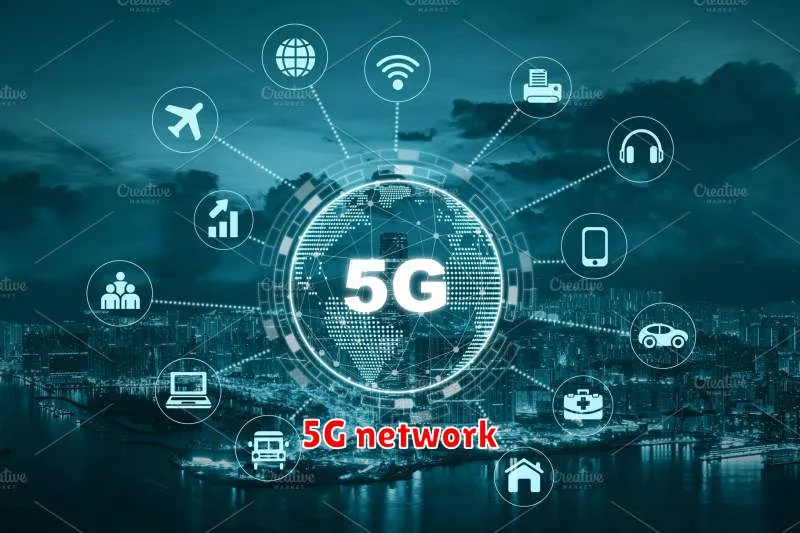The world is on the cusp of a technological revolution, and at the heart of it all is 5G network infrastructure. This groundbreaking technology is not just about faster internet speeds; it’s about fundamentally reshaping the way we live, work, and interact with the world around us. From autonomous vehicles to smart cities, virtual reality experiences to industrial automation, the possibilities of 5G are truly boundless.
But what exactly is 5G, and how will it impact our lives? This article delves into the transformative power of 5G network infrastructure, exploring its key features, potential applications, and the exciting future it promises. Buckle up, because the ride is about to get incredibly fast and innovative.
Understanding 5G: Key Features and Capabilities
The emergence of 5G technology has ushered in a new era of connectivity, promising to revolutionize various industries and aspects of our lives. 5G, the fifth generation of cellular network technology, boasts several key features and capabilities that set it apart from its predecessors.
Enhanced Speed and Bandwidth: 5G networks offer significantly faster download and upload speeds compared to previous generations. This increased bandwidth enables seamless streaming of high-definition video, lightning-fast file transfers, and real-time gaming experiences.
Low Latency: Latency, the delay between sending a request and receiving a response, is dramatically reduced in 5G. This low latency is crucial for applications like autonomous vehicles, remote surgery, and augmented reality, where real-time responsiveness is paramount.
Increased Capacity: 5G networks are designed to handle a much larger number of connected devices simultaneously. This increased capacity is essential for supporting the growing number of connected devices, including smartphones, wearables, smart home appliances, and IoT sensors.
Improved Energy Efficiency: 5G technology utilizes more efficient energy consumption methods, contributing to a more sustainable future. This efficiency extends the battery life of mobile devices and reduces the overall energy footprint of the network.
Network Slicing: 5G allows network operators to create virtualized slices of the network, dedicated to specific applications or services. This flexibility enables customized network configurations for different requirements, such as high-speed data for gaming or reliable connectivity for critical infrastructure.
Advanced Security Features: 5G incorporates robust security features to protect user data and ensure network integrity. These features include encryption protocols, authentication mechanisms, and intrusion detection systems.
Enhanced Mobile Broadband (eMBB): eMBB focuses on providing ultra-fast data speeds and high bandwidth for applications like mobile gaming, VR/AR, and 4K video streaming.
Ultra-Reliable Low Latency Communications (URLLC): URLLC is designed for mission-critical applications with extremely low latency and high reliability requirements, such as autonomous vehicles, remote surgery, and industrial automation.
Massive Machine-Type Communications (mMTC): mMTC enables the connection of massive numbers of devices, such as sensors in smart cities, wearable devices, and IoT devices.
Understanding the key features and capabilities of 5G is crucial for businesses and individuals alike. This transformative technology has the potential to revolutionize industries, enhance our daily lives, and drive innovation across various sectors.
The Building Blocks of 5G Network Infrastructure
The transformative power of 5G network infrastructure is undeniable. It promises to revolutionize how we connect, communicate, and interact with the world around us. But what are the key components that make this technological leap possible? Understanding the building blocks of 5G is crucial to appreciating its potential and the challenges it presents.
Core Network
At the heart of any 5G network lies the core network. This acts as the central control point, managing data flow and facilitating communication between devices. It’s the brains of the operation, enabling crucial functions like:
- User authentication and authorization
- Session management
- Routing and forwarding of data
- Data security and encryption
The core network is undergoing significant modernization with 5G, adopting cloud-native architectures and incorporating advanced technologies like network slicing and edge computing to enhance flexibility and performance.
Radio Access Network (RAN)
The RAN is responsible for connecting devices to the core network. It acts as the bridge between the physical world and the digital realm. This is where the power of 5G’s enhanced bandwidth, lower latency, and massive connectivity potential is realized. Key components of the RAN include:
- Base stations: These transmit and receive radio signals, providing coverage to devices within their range.
- Small cells: Smaller, localized base stations that can be deployed to enhance coverage and capacity in specific areas.
- Massive MIMO (Multiple-Input Multiple-Output) antennas: These transmit and receive signals on multiple antennas simultaneously, increasing capacity and coverage.
Spectrum and Frequency Bands
5G networks operate on specific frequency bands, which determine the speed and range of the network. The higher the frequency, the faster the data transmission but the shorter the range. 5G leverages both low-band and high-band frequencies to maximize its capabilities. Low-band frequencies offer wider coverage while high-band frequencies provide ultra-fast speeds for applications like augmented reality and virtual reality.
Network Slicing
One of the key advantages of 5G is its ability to create network slices. These are virtual networks within the larger 5G infrastructure, each tailored to specific needs and applications. Think of it like carving a cake into slices, each serving a different purpose. Network slicing enables operators to provide different levels of performance, latency, and security for various applications like industrial automation, autonomous vehicles, and virtual reality experiences.
By understanding the interconnected nature of these building blocks, we can better grasp the revolutionary potential of 5G. As the network infrastructure continues to evolve, we can expect even more innovative applications and transformative outcomes, shaping the way we live, work, and interact with the world around us.
Benefits and Opportunities of 5G Adoption
The advent of 5G technology marks a pivotal moment in the evolution of mobile communication and beyond. Its ability to deliver unprecedented speed, low latency, and enhanced connectivity opens up a world of possibilities, transforming various sectors and empowering businesses and individuals alike. This article delves into the profound benefits and opportunities that 5G adoption presents.
One of the most significant advantages of 5G is its blazing-fast speed, capable of delivering data rates that are several times faster than 4G. This rapid data transfer enables seamless streaming of high-definition video content, lightning-fast downloads, and real-time gaming experiences. Moreover, the increased bandwidth provided by 5G facilitates the growth of data-intensive applications and services, such as cloud computing, virtual reality (VR), and augmented reality (AR), fostering innovation and driving economic growth.
Another key benefit of 5G is its ultra-low latency, which refers to the minimal delay between sending and receiving data. This near-instantaneous response time is crucial for real-time applications like remote surgery, autonomous vehicles, and industrial automation. The low latency also empowers businesses to streamline operations, improve efficiency, and enhance customer experiences. 5G’s ability to connect a massive number of devices simultaneously, known as massive Machine-Type Communication (mMTC), paves the way for the Internet of Things (IoT) to truly flourish. With 5G, billions of connected devices, from smart sensors to industrial robots, can communicate seamlessly, facilitating the creation of intelligent environments, optimizing processes, and improving safety.
The transformative power of 5G extends beyond technological advancements. It presents unprecedented opportunities for economic growth, social progress, and environmental sustainability. The widespread adoption of 5G can create new industries, generate millions of jobs, and boost productivity. In the healthcare sector, 5G-enabled remote monitoring and diagnosis can revolutionize patient care, enabling faster and more accurate diagnoses. Furthermore, 5G can play a vital role in addressing climate change by enabling smart cities, optimizing energy consumption, and promoting sustainable transportation solutions.
In conclusion, the benefits and opportunities of 5G adoption are numerous and far-reaching. From faster speeds and lower latency to enhanced connectivity and new economic opportunities, 5G is poised to revolutionize how we live, work, and interact with the world. Embracing this transformative technology is essential to harness its full potential and shape a more connected, innovative, and sustainable future.
Industries Poised for Disruption by 5G Technology
The advent of 5G technology is poised to revolutionize numerous industries, transforming the way businesses operate and interact with their customers. This next generation of cellular networks offers unprecedented speed, low latency, and enhanced connectivity, creating a fertile ground for innovation and disruption.
Healthcare is one industry set to be profoundly impacted by 5G. The technology enables real-time remote monitoring of patients, facilitating remote surgery and diagnostics. With its ultra-low latency, 5G empowers healthcare providers to deliver critical care more efficiently and effectively, ultimately improving patient outcomes.
The automotive industry is also on the verge of a 5G-driven transformation. Connected and autonomous vehicles will rely heavily on 5G’s high bandwidth and low latency for seamless communication and data exchange. This will lead to advancements in driver assistance systems, autonomous driving capabilities, and improved traffic management systems.
Manufacturing stands to benefit greatly from 5G’s ability to enhance industrial automation and efficiency. The technology enables the creation of smart factories, where robots, machines, and sensors communicate seamlessly, optimizing production processes and reducing downtime. This will result in improved productivity, increased efficiency, and greater responsiveness to market demands.
Retail will experience a significant shift with the rise of 5G. Enhanced connectivity will enable seamless omnichannel experiences, personalized recommendations, and interactive shopping environments. 5G will power immersive augmented and virtual reality applications, transforming the way consumers interact with products and brands.
Education will be revolutionized by 5G, empowering students and educators with access to real-time learning materials, interactive simulations, and immersive educational experiences. The technology will facilitate remote learning and collaborative projects, fostering a more engaging and accessible learning environment.
As 5G technology matures and becomes more widely adopted, we can expect to see even more transformative applications across various industries. This wave of innovation will undoubtedly reshape the landscape of business and everyday life, paving the way for a more connected, efficient, and personalized future.
Challenges and Considerations for 5G Infrastructure Deployment
The transformative power of 5G is undeniable, promising a future where hyper-connectivity fuels innovation and revolutionizes industries. However, realizing this potential necessitates tackling significant challenges associated with 5G infrastructure deployment. Navigating these complexities is crucial to ensure a smooth and successful transition to this next-generation network.
Spectrum Acquisition and Allocation: Securing sufficient spectrum for 5G deployment is paramount, as it provides the foundation for high-speed data transmission. Governments and regulators face the challenging task of allocating valuable spectrum resources while balancing the needs of diverse stakeholders, including existing wireless services. Furthermore, the higher frequencies required for 5G experience greater signal attenuation, requiring denser cell tower deployments to maintain coverage. This presents logistical challenges and necessitates coordination with local communities and authorities.
Infrastructure Cost and Return on Investment (ROI): Deploying 5G infrastructure requires substantial investments in new equipment, network upgrades, and site acquisition. The high initial costs can be daunting, particularly for service providers operating in competitive markets. Careful financial planning and a well-defined business case are essential to ensure a positive return on investment. Exploring innovative funding models and partnerships can help alleviate the financial burden and facilitate faster 5G rollout.
Regulatory Framework and Standardization: A robust regulatory environment is essential to guide the deployment and operation of 5G networks. This includes addressing security concerns, ensuring interoperability, and establishing clear guidelines for network performance and service quality. Furthermore, global standardization efforts are vital to facilitate the seamless integration of 5G equipment and services across borders, fostering a vibrant ecosystem of innovation and collaboration.
Public Awareness and Acceptance: Building public awareness and acceptance is crucial for successful 5G deployment. Addressing concerns about potential health risks associated with radiofrequency emissions is essential. Engaging with communities through transparent communication and open dialogue can help dispel misconceptions and foster trust in this transformative technology.
Security Implications of 5G Network Infrastructure
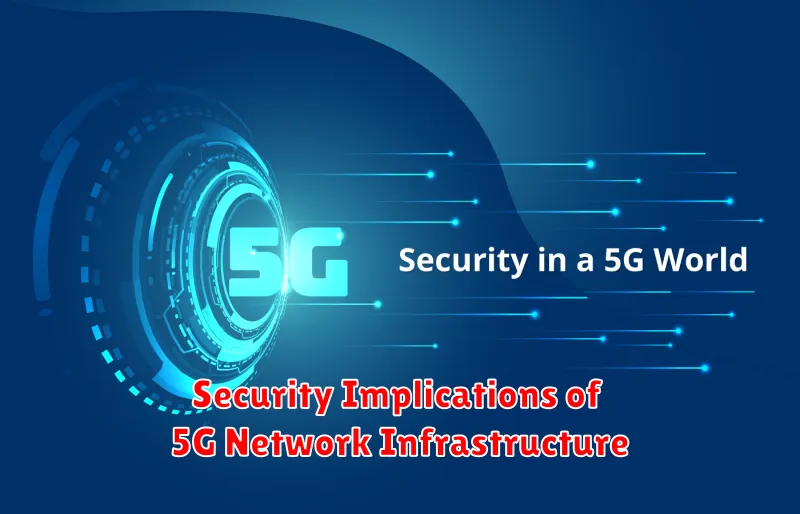
The arrival of 5G technology promises a revolution in connectivity, opening doors to unprecedented speeds, low latency, and massive connectivity. This transformative power, however, comes with inherent security implications that demand serious consideration. 5G’s enhanced capabilities, while beneficial, also expand the attack surface, making it a more tempting target for malicious actors.
One key concern is the increased reliance on software and virtualization. 5G networks leverage software-defined networking (SDN) and network function virtualization (NFV), which introduce new vulnerabilities. Attacks targeting these virtualized functions could disrupt network operations or even compromise sensitive data. Additionally, the proliferation of connected devices and the Internet of Things (IoT) in a 5G environment creates a vast network of potential entry points for attackers.
Another significant concern is the vulnerability of 5G core networks. Traditional cellular networks had a relatively simple structure, but 5G’s distributed and cloud-based architecture introduces complexity. This complexity makes it harder to secure the core network, potentially exposing it to denial-of-service attacks, data breaches, and other threats. The increasing use of network slicing, allowing operators to create virtual networks within the 5G infrastructure, raises further security concerns. Attackers could potentially target specific slices, disrupting critical services or stealing sensitive information.
Addressing these security challenges is paramount for the successful deployment and adoption of 5G technology. Implementing robust security measures, including strong authentication, encryption, and intrusion detection systems, is crucial. Collaboration between network operators, vendors, and security researchers is essential to proactively identify and mitigate vulnerabilities. Furthermore, raising awareness among users about potential risks and best security practices is vital in creating a secure 5G ecosystem.
The Role of Edge Computing in 5G Networks
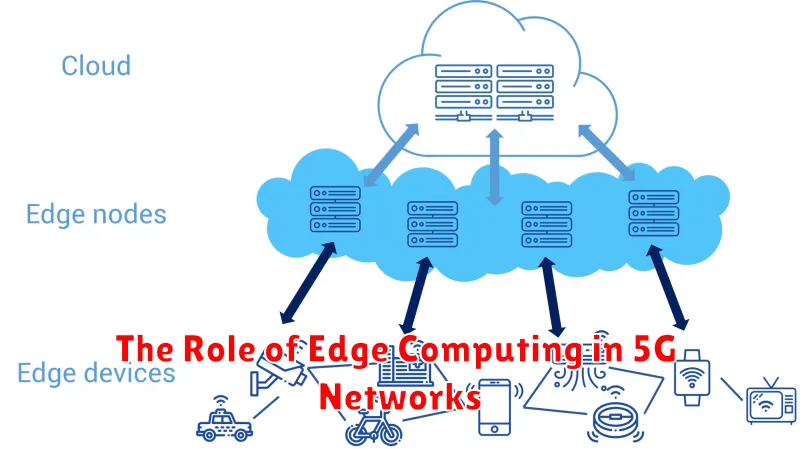
The advent of 5G technology has revolutionized the way we connect and interact with the digital world. It promises lightning-fast speeds, low latency, and massive bandwidth, enabling a wide range of new applications and services. However, to truly unlock the full potential of 5G, we need to address the challenges of data processing and latency. This is where edge computing comes into play.
Edge computing brings computing power closer to the source of data, reducing the distance data travels and minimizing latency. In the context of 5G, this means deploying computing resources at the edge of the network, closer to users and devices. This shift in computing paradigm is crucial for supporting the demands of 5G applications, particularly those requiring real-time processing and responsiveness.
Here’s how edge computing empowers 5G networks:
- Reduced Latency: Edge computing significantly reduces latency by processing data closer to the source, enabling real-time applications like autonomous driving, virtual reality, and industrial automation.
- Improved Network Capacity: Offloading data processing to edge servers reduces the burden on the core network, freeing up bandwidth and improving overall network capacity.
- Enhanced Security: With data processing closer to the source, edge computing offers improved security by minimizing data transmission over long distances and reducing the attack surface.
- Local Data Processing: Edge computing enables localized data processing, which is essential for applications requiring privacy and compliance with local regulations.
- Increased Scalability and Flexibility: Edge computing provides a flexible and scalable infrastructure that can easily adapt to the changing needs of 5G applications.
Edge computing is a critical component of the 5G ecosystem, unlocking the transformative potential of the technology. By pushing computing power closer to the user, edge computing enables the development of innovative applications, improves network efficiency, and drives digital transformation across industries.
Network Slicing and its Applications in 5G

As the world embraces the transformative power of 5G, a key enabler of its success is network slicing. This groundbreaking technology enables mobile network operators (MNOs) to partition their network infrastructure into virtualized, dedicated slices, each tailored to meet the unique requirements of specific applications and services.
Imagine a network that can simultaneously support the high bandwidth demands of a virtual reality gaming session, the ultra-low latency requirements of autonomous vehicle control, and the reliability needs of a critical industrial process. This is the promise of network slicing, and its potential applications are vast and diverse.
Key Benefits of Network Slicing:
- Enhanced Service Quality: Each slice can be optimized for specific traffic types, ensuring high performance and reliability.
- Flexibility and Agility: New services can be launched quickly and easily by provisioning dedicated slices.
- Cost Efficiency: Resources are utilized more effectively, reducing overall operational costs.
- Security and Isolation: Each slice operates in a separate virtual environment, enhancing security and preventing interference from other services.
Applications of Network Slicing in 5G:
Network slicing is poised to revolutionize various industries by enabling the development of new and innovative applications. Here are some notable examples:
- Enhanced Mobile Broadband (eMBB): Delivering high-speed internet access for consumers, businesses, and industries.
- Ultra-Reliable Low Latency Communications (URLLC): Enabling critical applications such as remote surgery, autonomous vehicles, and industrial automation.
- Massive Machine-Type Communications (mMTC): Supporting the massive connectivity of IoT devices in smart cities, agriculture, and manufacturing.
- Smart Cities: Providing efficient and reliable connectivity for smart street lighting, traffic management, and public safety systems.
- Industry 4.0: Empowering industrial automation, predictive maintenance, and real-time data analysis for enhanced efficiency and productivity.
In conclusion, network slicing is a transformative technology that unlocks the full potential of 5G. By enabling tailored and dedicated network resources, it empowers MNOs to deliver innovative services and solutions that cater to the diverse needs of various industries and applications. As 5G continues to evolve, network slicing will play a pivotal role in shaping the future of connectivity and driving innovation across the globe.
The Future of 5G: Trends and Predictions
The advent of 5G has ushered in a new era of connectivity, revolutionizing the way we live, work, and interact with the world around us. As we navigate this rapidly evolving landscape, understanding the trends and predictions shaping the future of 5G is crucial.
One of the most significant trends is the rise of edge computing. This paradigm shift involves processing data closer to the source, reducing latency and enabling real-time applications. 5G’s high bandwidth and low latency make it the ideal platform for edge computing, paving the way for innovations in autonomous vehicles, industrial automation, and virtual reality.
Another key trend is the increasing adoption of network slicing. This technology allows network operators to divide the 5G network into virtual segments, each tailored to specific applications. Network slicing enables operators to offer customized services and optimize network performance for diverse use cases, from high-speed mobile gaming to critical infrastructure monitoring.
The future of 5G also holds immense potential for Internet of Things (IoT) applications. The combination of 5G’s speed, reliability, and connectivity capabilities will enable the seamless integration of billions of connected devices, transforming industries like healthcare, manufacturing, and agriculture.
Looking ahead, we can expect to see the emergence of new 5G technologies, including 5G Advanced and 6G. These advancements will further enhance network speed, capacity, and security, unlocking even greater possibilities for innovation.
As the 5G ecosystem continues to mature, the focus will shift towards vertical industry applications. 5G will become a critical enabler for industries to adopt advanced technologies, automate processes, and improve efficiency, driving economic growth and societal progress.
In conclusion, the future of 5G is brimming with exciting possibilities. By embracing the trends and predictions shaping this transformative technology, we can harness its full potential to create a more connected, intelligent, and sustainable future for all.
Use Cases: 5G in Action Across Industries
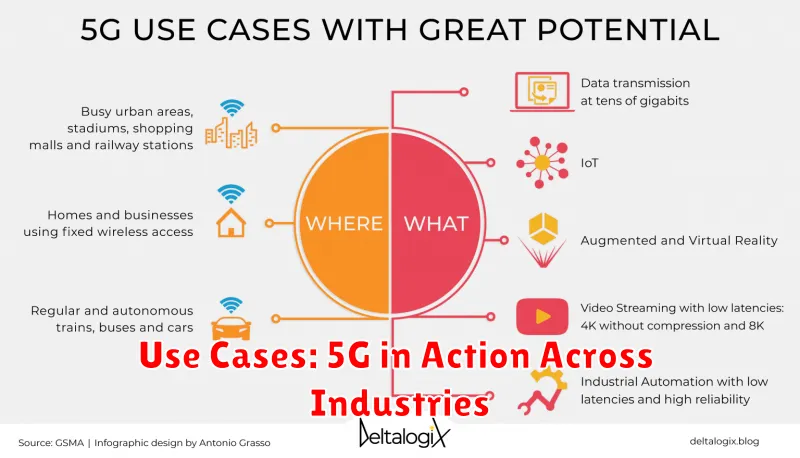
Beyond just faster speeds, 5G is revolutionizing how we work, live, and interact with the world. Its low latency, high bandwidth, and ability to connect billions of devices are opening doors to countless possibilities across various industries. Let’s explore some of the most impactful use cases of 5G technology in action.
Healthcare: Revolutionizing Patient Care
5G’s low latency is transforming the healthcare landscape. Imagine real-time remote surgery, where surgeons can operate on patients remotely, guided by high-resolution 3D images transmitted over 5G. Telemedicine is becoming even more accessible, allowing patients to receive specialist consultations from anywhere in the world. The speed and reliability of 5G also enable the development of advanced medical devices, wearable health trackers, and smart hospital environments for more efficient care.
Manufacturing: The Future of Industry 4.0
5G is the backbone of the Industrial Internet of Things (IIoT), connecting machines, sensors, and robots on the factory floor. This allows for real-time data analysis and control, enabling manufacturers to optimize production processes, reduce downtime, and enhance quality control. 5G’s capabilities also pave the way for automated guided vehicles (AGVs), collaborative robots (cobots), and 3D printing, ushering in a new era of automation and efficiency.
Smart Cities: Building Connected Communities
5G is a critical component of smart city initiatives, enabling intelligent infrastructure and services. With 5G, cities can implement real-time traffic management systems, improve public safety through connected surveillance, and optimize resource allocation for efficient waste management and energy consumption. Smart streetlights, connected parking systems, and intelligent transportation networks all rely on the power of 5G.
Entertainment and Media: Immersive Experiences
5G is transforming the way we experience entertainment and media. Imagine attending a virtual concert, enjoying immersive gaming experiences with lightning-fast response times, or watching high-definition video streams without buffering. 5G’s high bandwidth and low latency make all of this possible, unlocking new possibilities for content creation, distribution, and consumption.
Agriculture: Sustainable Farming Practices
5G is revolutionizing agriculture by enabling precision farming techniques. Sensors connected via 5G can monitor soil conditions, weather patterns, and crop health in real-time, allowing farmers to optimize irrigation, fertilizer application, and pest control. 5G also facilitates drone-based crop monitoring, automated harvesting, and precision livestock management, contributing to increased efficiency and sustainability in agriculture.
These are just a few examples of how 5G is transforming industries across the globe. The transformative power of 5G is only beginning to be realized, and its potential for innovation is limitless. As 5G technology continues to evolve, we can expect even more groundbreaking use cases that will reshape our world and create a more connected and intelligent future.
Preparing Your Business for the 5G Revolution
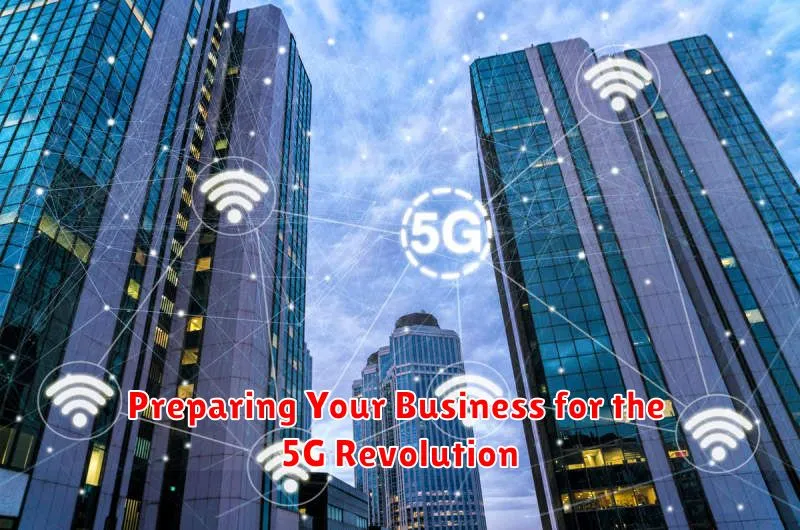
The 5G revolution is upon us, promising a future where businesses can operate with unprecedented speed, efficiency, and connectivity. It’s no longer a question of “if” but “how” your business will embrace this transformative technology. The potential of 5G is vast, impacting everything from streamlined operations to enhanced customer experiences. To thrive in this new era, businesses must be proactive, preparing themselves to harness the full power of this game-changing network infrastructure.
Here are key areas where businesses need to focus:
- Understanding 5G Capabilities: Dive deep into the unique characteristics of 5G, including its high speeds, low latency, and enhanced capacity. This knowledge will inform your strategic decisions and help you identify specific applications that will benefit the most from 5G.
- Evaluating Business Processes: Analyze your existing operations and identify areas where 5G can significantly improve efficiency, automation, or data analysis. This might involve streamlining supply chains, optimizing manufacturing processes, or creating new digital services.
- Investing in Technology Upgrades: Ensure your IT infrastructure is ready for 5G. This may involve upgrading existing devices, adopting cloud-based solutions, and implementing secure network protocols. The investment in these upgrades will lay the foundation for smooth integration and optimal performance.
- Developing a 5G Strategy: Define your business goals and objectives, and create a strategic roadmap for 5G adoption. This plan should encompass the specific technologies you’ll utilize, the implementation timeline, and the necessary resources. A well-defined strategy will ensure a focused and successful transition.
- Embracing Innovation: Explore the potential of 5G to develop new products, services, and business models. From augmented reality applications to connected factories, the possibilities are endless. This is where businesses can truly differentiate themselves and capture the competitive edge that 5G offers.
The 5G revolution is not just about faster internet; it’s about unleashing a wave of innovation that will fundamentally change how businesses operate. By preparing now, businesses can position themselves to ride this wave and unlock the transformative potential of 5G, ultimately achieving greater efficiency, growth, and customer satisfaction.

